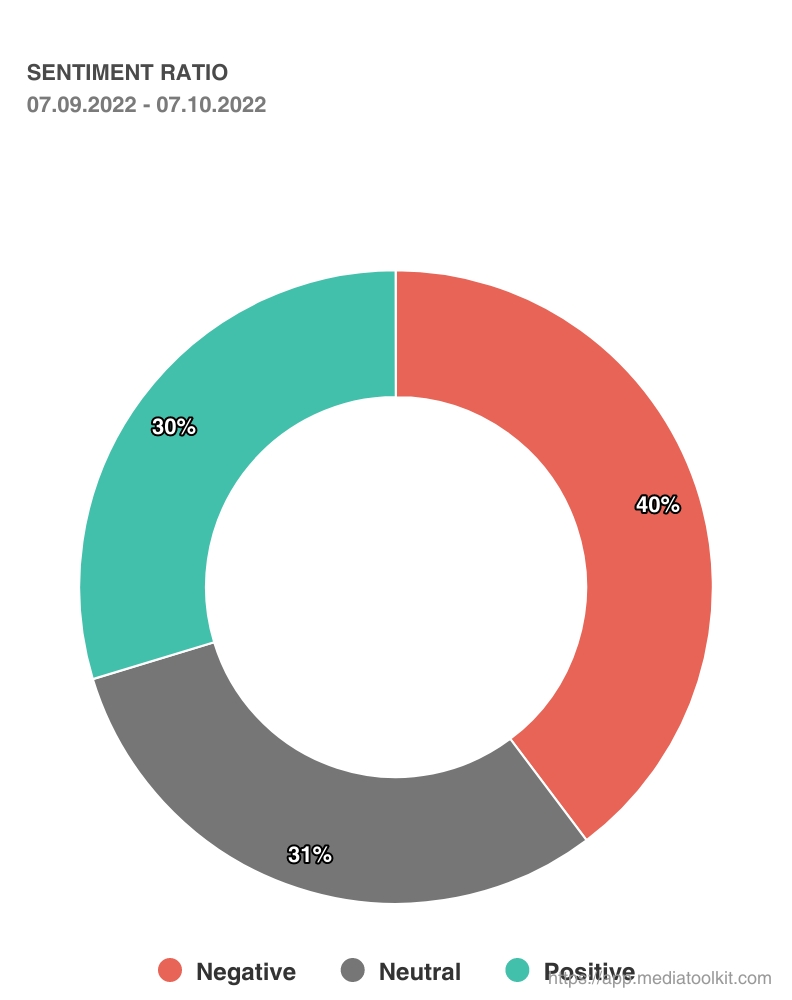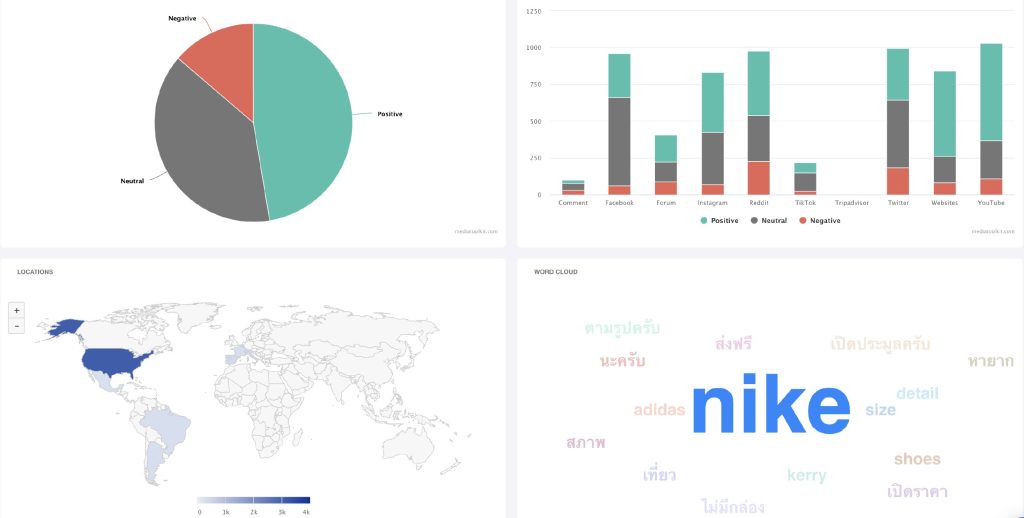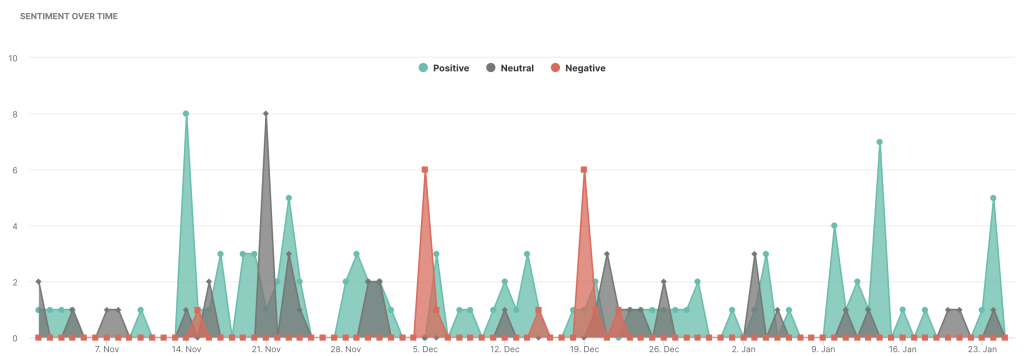This isn’t the first nor the last time in digital real estate that YouTube is staking its claim as the marketer’s muse. A Go-globe report points out that 78.8% of marketers consider YouTube the most effective video marketing platform.
And for those yet to harness its power, it’s high time to do so because experts believe that the websites having video content will rank highly and have better SERP visibility — especially after Google’s May ’22 Broad Core Algorithm.
However, like all other social media platforms, it’s a two-way street. While viewers consume the video content, there is also a lot of conversation in the comment section (a treasure trove of entertainment in itself!). They are the real people who actively talk about your brand, so obviously you do not want to look through them.
? Read Media Monitoring: The Ultimate Guide
But the words comprising these YouTube comments don’t tell the complete story, and there is also an online mood or, as they say, a sentiment behind it.
And only when you employ social listening for the user-generated content on YouTube videos, you’ll be able to understand their emotions and leverage them to take your YouTube marketing journey in a tangible direction.
That’s when the YouTube Sentiment Analysis comes in handy.
To navigate the process more easily, tools like Determ use Machine learning (ML) and Artificial intelligence (AI) algorithms to help marketers decipher customers’ sentiments from YouTube comments to understand their audience’s preferences better.
Now, let us understand the concept of YouTube sentiment analysis a little better.
What is Sentiment Analysis?
Sentiment analysis (or opinion mining) is how social media listening tools analyze and understand the emotions expressed in a text.
Generally, the text refers to brand mentions, posts, comments, and reviews of your brand on various social channels. But in this article, we’ll delve specifically into YouTube comments.
Read: How Social Listening Can Help Develop Your Video Marketing Strategy.

How Does Sentiment Analysis Work?
Machine learning (ML) and Natural language processing (NLP) confer advanced sentiment analytics tools with the contextual intelligence of the human brain.
Depending on the level of accuracy you would want for your model and the amount of data you need to analyze, you have three different sentiment analysis algorithms:
1. Rule-based sentiment analysis
This algorithm relies on predefined rules for defining the sentiments. The rules are nothing but manually crafted lexicons constituting a list of words and expressions.
You may further refine rules and can build them around linguistic aspects such as parts of speech and syntax.
Here’s how it works:
- The first task is to create a lexicon that expresses positive and negative sentiments —for instance, awesome, super easy, affordable, pricey, bad, etc.
- Tokenization- a process to break the text into small chunks that machines can understand.
- Next, the model counts the number of positive and negative words in the text under the question.
- The final step is to count the text’s overall sentiment strength score on a scale of -100 to +100, with 0 being the neutral sentiment.
2. Machine learning-based sentiment analysis
In this automated approach, sentiments are classified using a trained ML algorithm under supervision. The quantity of data it analyzes is far greater than the rule-based approach.
Here’s how it works:
- The feature extraction step prepares the text to make it legible by the computer.
- In the training and prediction phase, the model is introduced to the training data set with sentiments labeled to them. The model then learns to associate the input data with the corresponding positive and negative labels.
- The algorithm continues to learn until it is independent enough to assess the sentiments of unknown text.
- In the prediction step, on feeding upon an unseen text, the model starts to predict its label or sentiment class using its learning from the training data.
- Different classification algorithms such as Naive Bayes, Linear regression, Logistic regression, Support vector machines, and Deep learning deliver excellent results for large-scale sentiment analysis.
Read How to Conduct Sentiment Analysis to Improve Customer Experience?
3. Hybrid sentiment analysis
This one takes advantage of the accuracy of the ML approach and stability of the rule-based approach and combines them in a single system.
What is the Process of Sentiment Analysis?
Now that we have warmed you up with the basics, let’s break down the sentiment analysis process for more clarity.
1. Data collection
It makes sense to be extremely cautious about this step as everything that happens after that depends on the quality of the collected and annotated data. You can do this in the following ways:
- API
Gather and upload all the publicly available data depending on the platform, such as live API, news API, and Facebook API. Open-source repositories like Amazon reviews, Yelp, or Kaggle might also be helpful.
- Manual
You can upload the data from a CRM tool on the sentiment analysis API as a .csv file.
2. Data processing
The way data processing happens depends on whether it’s text, image, audio, or video. Here’s how video data processing takes place:
- Speech-to-text software transcribes the audio present in the video.
- The platform extracts and analyzes the captions appearing in the video with the aim that no potentially significant entity is overlooked in the process.
- The next step recognises and captures images and text data through optical character recognition.
- Then an intelligent scanner conducts an in-depth scan to recognize any logos that appear in the video.
- In the end, the platform recognises and extracts all the text.

3. Data analysis
This stage has many subtasks as follows:
- Training
Preparing a pre-processed, manually labeled, and classified dataset is a crucial step to train the model to perform sentiment analysis. It also enables the model to compare the classified training data with the incorrectly classified ones.
- Custom tags
The model needs custom tags for data like brand mentions or product names. Once tags are ready, the model is trained to sieve the text having these tags automatically.
- Topic classification
Next is the classification and tagging of text with specific themes or topics on your product.
For example- “The lasagna tastes awesome here” is tagged as the topic “Food”.
- Sentiment analysis
At this stage, the tool isolates, analyzes, and scores every aspect and topic on a scale of -100 to +100. Then it calculates the aggregate score of different aspects to decode the audience’s sentiment towards the brand.
Read Sentiment Tracking: How to Get Inside Your Customers’ Minds?
4. Data visualization
Now it’s time to convert the analysis insights into actionable reports as visually appealing graphs and charts. These aspect-wise reports make understanding even the minutest details a cakewalk.
Most advanced sentiment analysis tools come with intuitive dashboards with countless visibility features. It helps you put the results to the best use while designing a growth strategy.

Let us now narrow down and learn more about performing sentiment analysis on YouTube comments.
Read James Charles and Tati YouTube Drama: a Turn of Events More Exciting Than GoT
A Step-by-step Guide To Performing YouTube Sentiment Analysis
Scrapping comments
You first need to collect YouTube comments; if you are doing it manually, export them to a CSV file to make it compatible with the ML API.
However, automation can offer you a great deal of ease with data collection. Web scraping tools can help you do that. Some amazing visual scraping tools such as Dexi.io, Import.io, and ParseHub help you collect the data without the knowledge of coding. If you are an old coding hand, open-source web scraping frameworks are also useful.
Read Online reviews: the ultimate guide on how to track and handle them
Cleaning and splitting data
It’s a manual step. First, the data collected needs some cleansing to eliminate noise, such as repetitive texts, irrelevant symbols, URLs, etc., which can otherwise degrade the quality of the analysis. Moreover, analyzing comments with multiple statements (sometimes with even contrasting opinions) without separating them may lead to skewed data. To avoid this, split the data into individual units.
Analyzing sentiments
The next task is to classify and tag each of the opinions in Positive, Negative, and Neutral tags and train your model. The model eventually begins to make predictions after you tag a few opinions. Nevertheless, the more you train the model, the better it performs.
Training is followed by testing the model- to test how well the model is working on the set criteria. If the model seems to lag on the performance after a few tests, you can go back to the training step.
Once you train the model, it’s time to bring it into play. Depending on your sentiment analysis tool, you can upload the data to be analyzed through a CSV file, integrated apps like Gmail, Zendesk, or plug-ins.
At this point, aspect-based YouTube sentiment analysis can significantly help fine-tune the analysis by classifying comments by topics, as discussed earlier.
Another option is to use media monitoring tool such as Determ, and monitor YouTube sentiment through the tool directly.
Read 5 Best Sentiment Analysis Tools in 2022
Visualizing results
Here, graphs and pie charts guide you through the granular view of emotions corresponding to different aspects. You can also look for definitive patterns and trends to make informed decisions.

Get Started With Analyzing YouTube Comments Yourself
Sentiments of your YouTube comments are no less than a data goldmine. Considering this, conducting a YouTube sentiment analysis can help you better make sense of it and adjust your marketing strategy accordingly.
With the right kind of tools at your disposal, there is no doubt that you will be able to nail this seemingly difficult technique.
Paul Fraser is a Freelance Content Writer at Commerce Mentors. He has two years of experience in writing about eCommerce, Technology, and Marketing. Paul is also a number guy who enjoys reading novels. When not working, he loves visiting new cafes and spending time with his friends.



